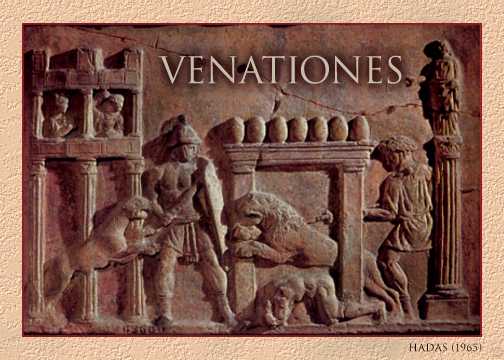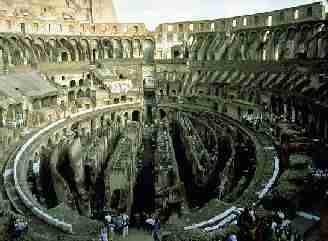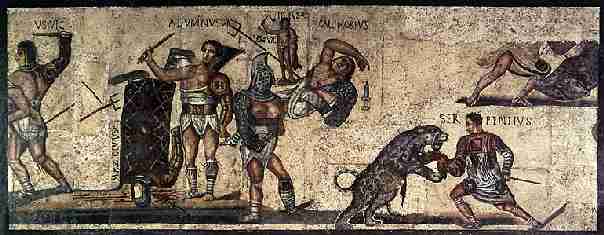| Beasts | ||
| Home
|

http://www.ancientsites.com/er/circusvenationes.html
The beast fights were known in the Roman world as the venationes. The beast battles were extremely popular to Roman spectators, they enjoyed the bloody entertainment shows. Beast fights were conducted by specially trained hunters called bestiarii. They wore a belt, a simple linen tunic and fought with a venabulum, an animal spear. Most bestarii were slaves, their death-rate was very high and some of their feats of animal slaughter are acknowledged as amazing. Often the editor of the games (commonly the Roman emperor) would severely starve the savage beasts in the underground cages in order to promote a more bloody fight in the arena. When the show was ready to commence, the animals were hoisted to ground level. Desperate for freedom, the animals raced up the ramp and exited through trapdoors into the Colosseum to fight with the bestiarii and to either kill or be killed. The editor of the games would import animals from around the world at great expense in order to make the games as unique as possible. Elephants, lions, bears, leopards, panthers, and ostriches are all documented as making an appearance in the venationes. Hundreds and even thousands of animals could be used in the beast fights in just one day. These massive hunting shows were the expression of Rome's imperial ambitions and power. The Romans were always regarded as dedicated hunters from the early Republic through the Empire. When Rome expanded and conquered lands they encountered exotic animals outside of Italy, and these encounters sparked an interest in fighting unique beasts. According to Pearson, "beasts held an extraordinary symbolic power for the Romans and were ideal for impressing the unsophisticated, bloodthirsty mob -- a perfect way of flattering them and bringing home to their imaginations something of the foreign conquests of Roman arms." Another aspect of the beast hunt, is the story of Christian suffering. In Christian legend, the Colosseum is associated with a lengthy series of heroic deaths. The first Christian to suffer martyrdom in the arena was St. Ignatius who was thrown to the lions. Emperors often believed that the Christians were a sect of dangerous revolutionaries and for this reason many were killed by the beasts, as well as being shot with arrows. In addition, beasts were used for display purposes. For example, boys would dance on the backs of wild bulls and lions would catch rabbits in their teeth and bring them to their trainers unharmed. Elephants were a huge attraction at the games and often performed spectacular acts such as dancing and tightrope walking. The audience was thrilled by trained animals defying the laws of nature including the above and also amazing acts such as leopard walking peacefully with antelopes and crocodiles allowing boys to ride them in the water. It was also found that Emperor Elagabalus enjoyed driving a chariot harnessed to lions, tiger and stags and then allowing these trained animals to run loose in his home. It should also be noted that although many beast hunts occurred within the Colosseum, another favorite spot for these fights was the Circus Maximus. http://www.newschool.edu/infotech/va2/va2s00/danieln/gladiator.html
These pages were complied by the following students of the University of Akron: Matt Clore (Senior), Heather Graham (Sophomore) and Courtney Mullen (Junior)
|
|

